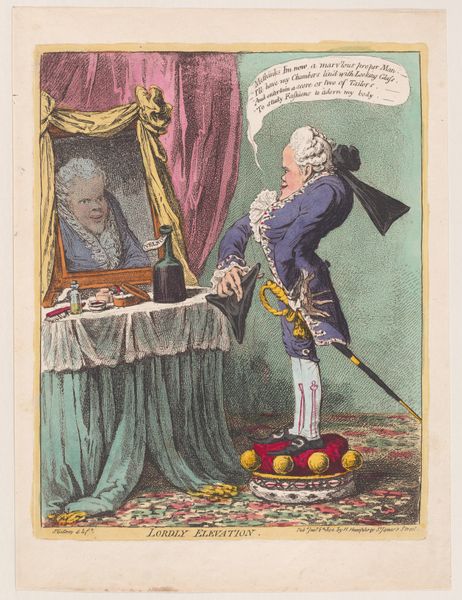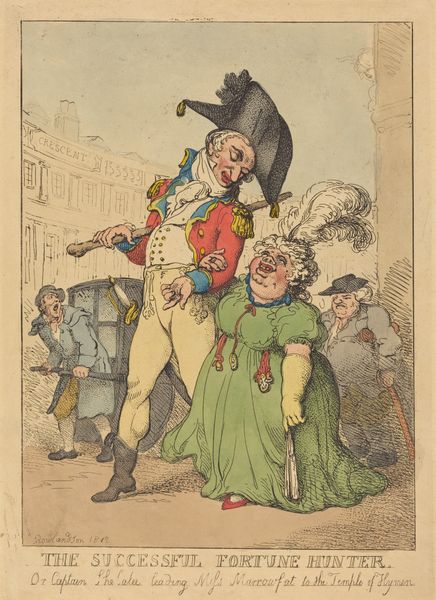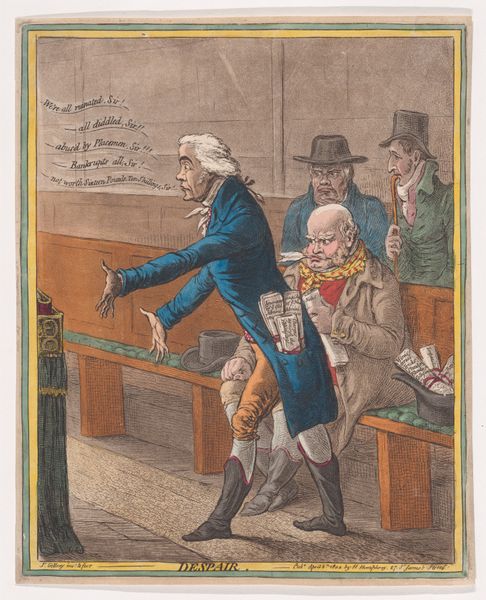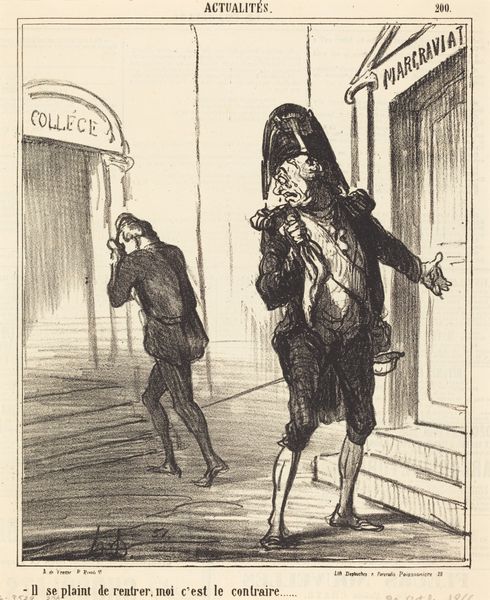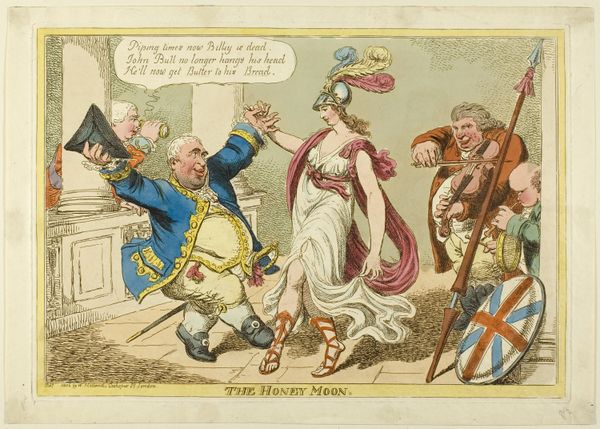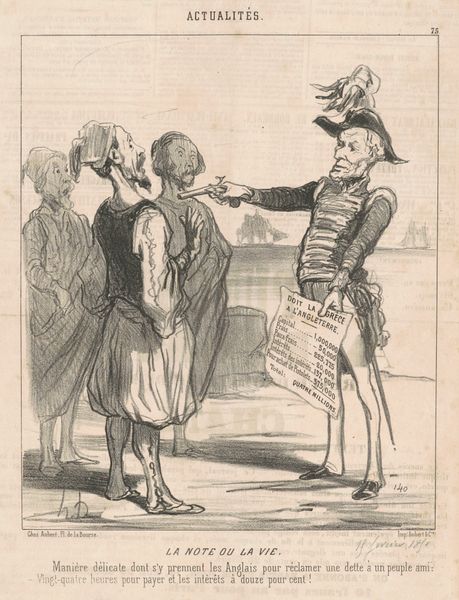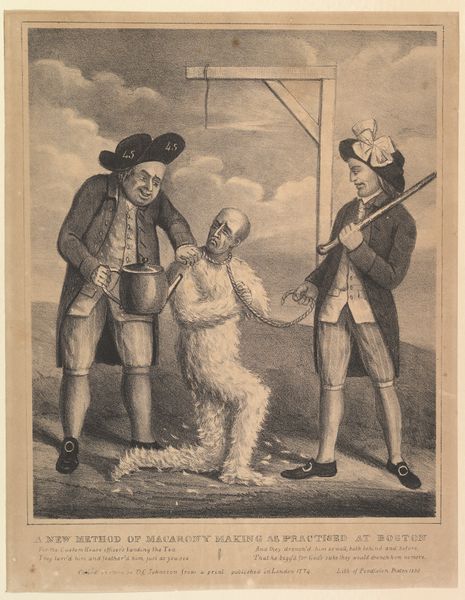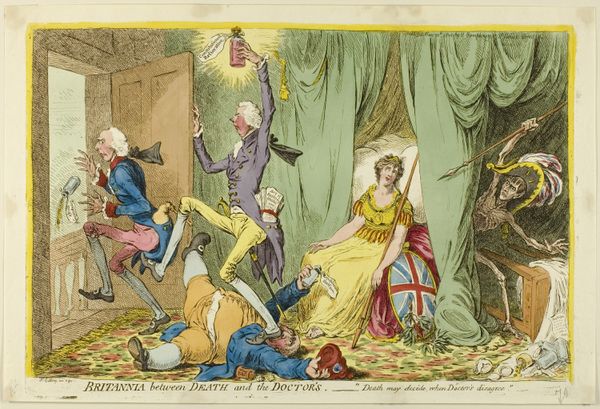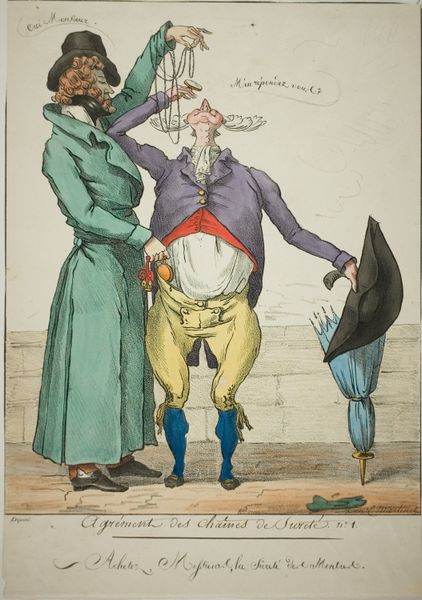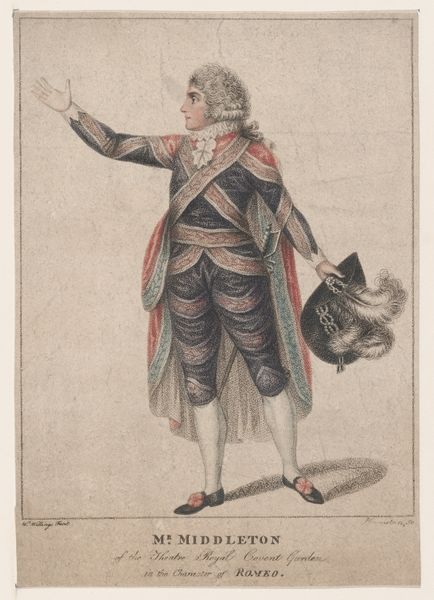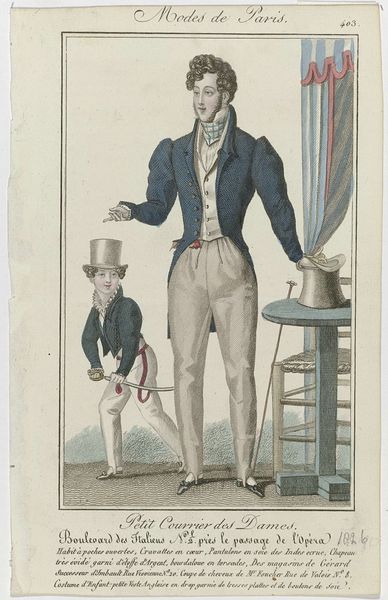
coloured-pencil, print, etching, engraving
#
portrait
#
coloured-pencil
# print
#
etching
#
caricature
#
caricature
#
coloured pencil
#
history-painting
#
engraving
Dimensions: plate: 24.4 x 22 cm (9 5/8 x 8 11/16 in.) sheet: 26.7 x 22.5 cm (10 1/2 x 8 7/8 in.)
Copyright: National Gallery of Art: CC0 1.0
Curator: Isaac Cruikshank's 1793 print, "The Martyr of Equality," presents a rather visceral reaction to the French Revolution. Its original media included etching and engraving that was colored by hand. Editor: Immediately, the level of gore jumps out, coupled with that sarcastic title. There’s something deeply unsettling about the smug expression on the executioner juxtaposed with the severed head. Curator: Indeed. It’s a potent piece of political propaganda reflecting British anxieties about revolutionary fervor spilling across the Channel. The central figure, dripping in the blood of aristocrats, holds aloft a bonnet rouge impaled by a royal symbol – a clear statement. Editor: And the sash across his chest proclaims "Egalité" while carnage surrounds him. Cruikshank is dismantling the revolution's central promise of equality. But, it's a biased portrayal, demonizing those fighting for change, which also should be recognized. Curator: Certainly. These kinds of caricatures were vital tools in shaping public opinion at the time. Prints like this would have been widely distributed, shaping perceptions of the revolution and its actors as barbaric. Editor: It makes you wonder about the effectiveness of such pieces. Did it really deter potential revolutionaries in Britain, or did it merely reinforce existing class divisions and prejudices? Was this viewed differently amongst different groups of viewers in that era? Curator: Good questions! These images solidified conservative narratives and received enthusiastic public responses among those already suspicious of revolutionary upheaval, showing that cultural products have power in bolstering ideological viewpoints. Editor: This is a sobering reminder of how art can be weaponized in political discourse. While technically proficient, it is equally an attempt to quash the idea of equality and justice for everyone. It compels us to consider art’s responsibilities. Curator: I agree. It exemplifies how political tensions and ideological battles permeated the art world during the late 18th century, highlighting the way visual media participated in larger debates about political and social structures. Editor: Seeing art from the lens of political conflict is never comfortable, but "The Martyr of Equality" serves as a grim invitation for thoughtful discussion on the relationship of history, power, and representation.
Comments
No comments
Be the first to comment and join the conversation on the ultimate creative platform.
